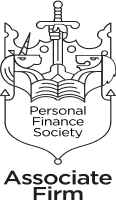Imagine a world…

The future of money is upon us and it’s exciting. We’re expecting to see 2018 as the year that cash is overtaken as the major form of payment in the UK. Whether it’s through cards, apps or even the swipe of a hand, the time of contactless payments has arrived.
Right at the forefront and keen to embrace these technological advancements is the travel industry. Welcoming tech, such as virtual reality, with open arms means that travellers may soon see their shopping experience streamlined. Imagine placing your mobile phone into an in-flight virtual reality headset – you look through the headset and see menu options for you to build your perfect meal and duty free items such as aftershave and alcohol to stock up on before you land. Part of the beauty of it all is that it would know which seat you were in for easy delivery and your payment details would be loaded onto your phone, making checkout seamless.
You could even be offered personalised experiences, depending on which flight you were taking. Flying to Venice? Why not book your gondola while you’re in the air? Spending the weekend in New York? Get those Broadway tickets sorted en route.
Contactless is coming; in fact in Sweden, for example, there are stores that are already refusing to accept notes and coins. Balance to balance transfers through mobile phones are also gradually being adopted in developing countries. From the government’s standpoint, the anonymity that physical cash provides is a drawback, as it can unfortunately be used as a cover for tax evasion and crime, so we can expect regulated contactless technology to be encouraged at all levels.
Of course there are people who hold concerns about the direction things are heading in. Mattias Skarec, a Swedish Digital Security Consultant, points out that no technology-based system is invulnerable to glitches and fraud. “We are naive to think we can abandon cash completely and rely on technology instead.” Speaking of problems with card payments that two Swedish banks have experienced during the last year, he states, “We are lucky that the people who know how to hack into them are on the good side, for now.” However, “we don’t know how things will progress. It’s not that easy to attack devices today, but maybe it will become easier in the future.”
As with any new development, it’s a case of balancing any disadvantages with the potential it offers. Meanwhile, dream of what a brave new world could bring you…









